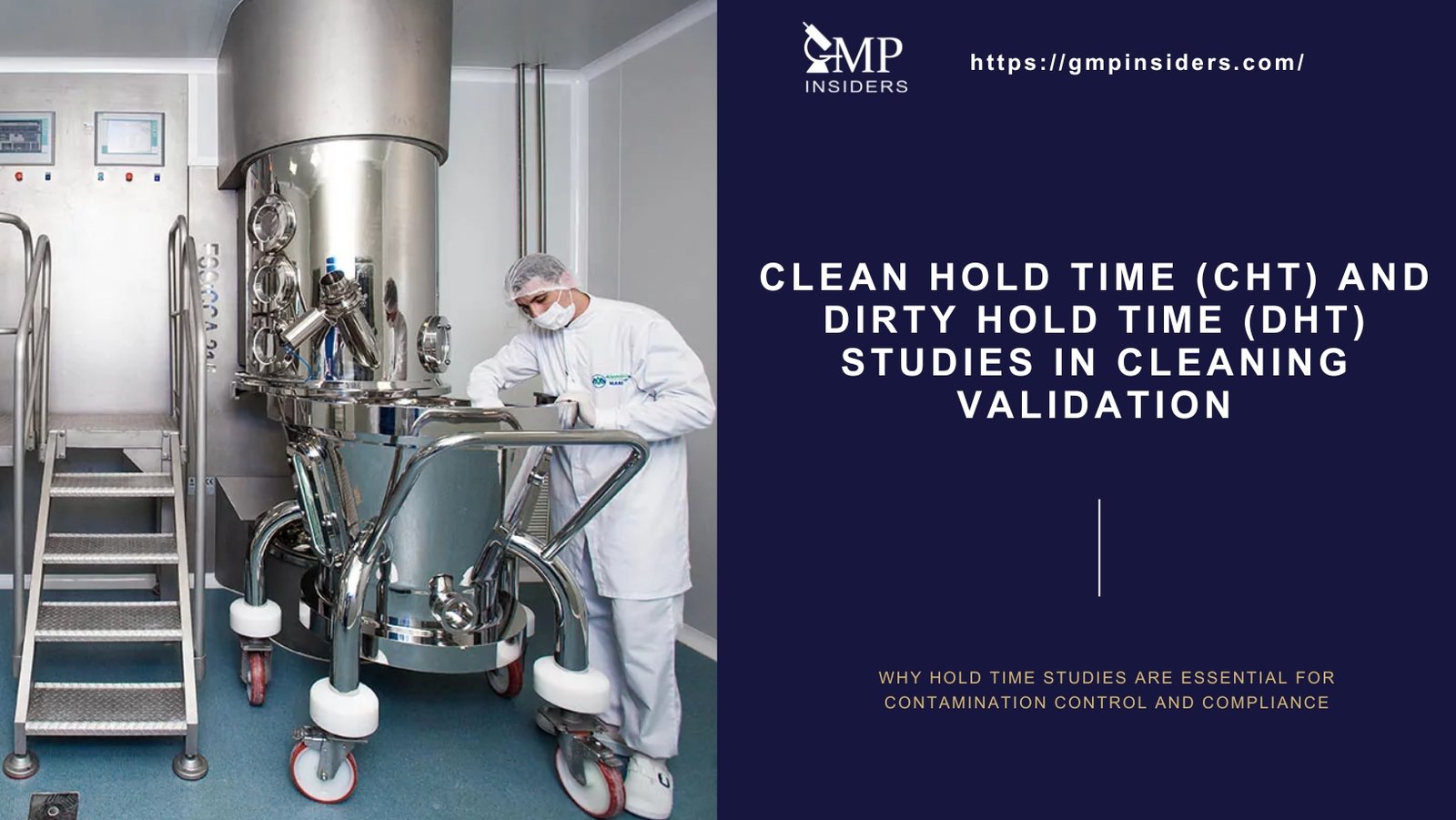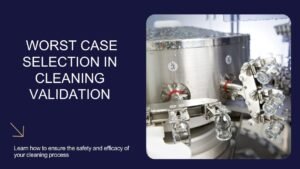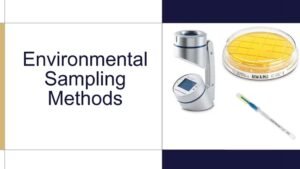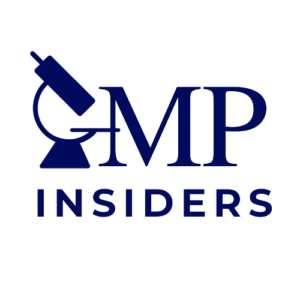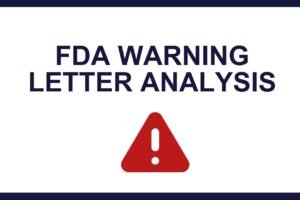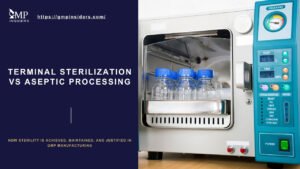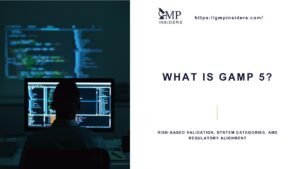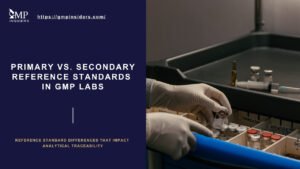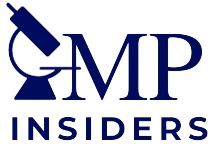Cleaning validation plays a central role in ensuring that equipment used in production does not carry over residues or contaminants that could compromise product quality or patient safety. A critical aspect of cleaning validation is the concept of hold time.
Specifically, Clean Hold Time (CHT) and Dirty Hold Time (DHT) define the acceptable durations during which equipment can remain idle before or after cleaning without compromising its validated status.
Dirty Hold Time refers to the period between the completion of product processing and the initiation of cleaning.
Clean Hold Time is the time between the completion of cleaning and the start of the next operation (e.g., sterilization, manufacturing).
These timeframes are essential for maintaining the effectiveness of cleaning procedures, minimizing microbial proliferation, and avoiding surface degradation or recontamination.
In this article, we’ll explore the key differences between Clean and Dirty Hold Times, regulatory expectations, how to design appropriate hold time studies, and the risks associated with poor control of these parameters.
What Is Hold Time in Cleaning Validation
Effective management of equipment hold times is critical to maintaining a validated state in pharmaceutical manufacturing. Clean Hold Time (CHT) and Dirty Hold Time (DHT) define two distinct phases where the control of residues, microbial contamination, and environmental exposure must be carefully managed to protect product quality and regulatory compliance.
Dirty Hold Time (DHT)
Dirty Hold Time refers to the maximum duration that equipment can remain idle after the completion of a manufacturing process and before the start of the cleaning procedure. During this period, equipment surfaces are exposed to risks such as:
- Drying and hardening of product residues, which can reduce cleaning effectiveness
- Microbial growth, particularly when residues retain moisture or contain nutrient-rich material
- Chemical degradation, potentially altering residue characteristics and complicating removal
Typical Activities:
- Swab or rinse sampling before cleaning to assess bioburden
- Determination of the maximum wait time before cleaning must begin
Validating Dirty Hold Time is essential to ensure that even after the maximum allowable delay, the established cleaning process can achieve the required level of cleanliness. It supports operational flexibility while maintaining the integrity of cleaning validation programs.
Clean Hold Time (CHT)
Clean Hold Time refers to the maximum period that cleaned equipment can be stored in a defined condition before being reused in production. During this period, the equipment must remain contamination-free to ensure its suitability for the next manufacturing operation.
Risks during the clean hold period include:
- Environmental recontamination due to exposure to airborne particulates or microbial contamination
- Loss of cleanliness if equipment is improperly stored (e.g., uncovered, in poorly controlled environments)
- Microbial ingress even in classified areas if proper storage and handling practices are not maintained
Typical Activities:
- Microbial and/or chemical testing of equipment after the hold period
- Evaluation of storage conditions (e.g., covered vs. uncovered, controlled vs. ambient)
Validating Clean Hold Time demonstrates that cleaned equipment retains its validated state over the defined holding period when stored appropriately. This is particularly important in sterile and non-sterile manufacturing environments, where maintaining equipment readiness is critical to product safety and process continuity.
Key Differences: DHT vs CHT
| Parameter | Dirty Hold Time (DHT) | Clean Hold Time (CHT) |
|---|---|---|
| Timing | After production, before cleaning | After cleaning, before reuse |
| Focus | Cleaning effectiveness post-delay | Cleanliness retention over storage period |
| Main Risk | Hardened residues, microbial growth | Recontamination, loss of validated status |
| Testing Type | Bioburden and residue sampling pre-cleaning | Microbial/chemical testing post-cleaning |
| Regulatory Relevance | Must validate worst-case delay before cleaning | Must ensure equipment remains clean for reuse |
Why Hold Time Studies Are Critical
Hold time studies serve a vital role in confirming that equipment remains in a state that does not compromise product quality, whether awaiting cleaning (dirty hold) or reuse (clean hold). These studies are not merely procedural but risk-control measures directly tied to contamination prevention, cleaning effectiveness, and regulatory compliance.
Key Reasons to Perform Hold Time Studies
- Microbial growth risk during Dirty Hold Time (DHT): Residual product or moisture left on equipment surfaces creates a favorable environment for microbial proliferation. Establishing a DHT limit helps ensure that bioburden remains within acceptable levels before cleaning.
- Residue hardening or degradation: Extended DHT may make product residues harder to remove or chemically alter, potentially impacting cleaning success or forming cross-contaminants.
- Recontamination risk during Clean Hold Time (CHT): Environmental exposure or improper storage can lead to surface contamination even after validated cleaning has occurred. CHT studies confirm that cleanliness is preserved over time under defined storage conditions.
- Maintaining a validated state of the cleaning process: CHT and DHT ensure that cleaning procedures are effective within the maximum operational windows, supporting the continued validated status of equipment.
- Regulatory expectation and audit readiness: The FDA, EMA, and other authorities frequently observe inadequate justification or missing data for hold times in their inspections.
Without validated hold times, companies risk deviating from GMP requirements, potentially compromising product quality and patient safety.
Hold Time Studies Design
Hold time studies should be designed to reflect actual manufacturing conditions and account for worst-case scenarios. The goal is to generate data that supports the maximum allowable timeframes for both DHT and CHT, without compromising equipment cleanliness or the effectiveness of the cleaning process.
SEE ALSO: Worst Case Selection in Cleaning Validation
Key Elements of Hold Time Study Design
Some of the key elements to take into consideration when designing a hold time study include:

- Selection of Equipment and Surfaces
Identify representative and worst-case equipment based on size, design complexity, materials of construction, and exposure to product residues. Target areas that are most difficult to clean or most prone to contamination.
- Definition of Study Time Points
Choose multiple time points (e.g., 0, 24, 48, 72 hours) to evaluate cleanliness or contamination over time. These should reflect both operational reality and regulatory expectations.
- Sampling Strategy
- For DHT studies: Perform swab or rinse sampling after the hold period but before cleaning to assess bioburden and visible residue.
- For CHT studies: Conduct microbial and/or chemical testing after cleaning and storage to evaluate cleanliness retention.
- Acceptance Criteria
Define limits based on:
- Microbial counts (e.g., NMT 10 CFU per swab area)
- Absence of visual residues
- Analytical testing for product or detergent residues (typically based on MACO calculations)
- Environmental and Storage Conditions
Simulate actual storage conditions for cleaned equipment, including open or closed environments, ambient or controlled humidity, and protected or exposed to air.
- Documentation and Protocol Requirements
Include:
- Justification of selected equipment and sampling sites
- Clearly defined procedures for sample collection and analysis
- Defined acceptance criteria
- Roles and responsibilities
Properly designed studies help establish scientifically justified time limits, support inspection readiness, and reduce the risk of non-compliance or cleaning failure.
Interpreting and Applying Hold Time Data
Once data from hold time studies are collected, the results must be interpreted in the context of routine operations. The purpose is to define time limits for maintaining equipment cleanliness and cleaning throughout the established hold period.
Key Considerations
- Verification of Acceptable Results Across All Time Points: Confirm that microbial and/or chemical levels remain within predefined acceptance criteria at each tested interval. The longest time point with consistently acceptable results typically becomes the validated hold time.
- Worst-Case Confirmation: Results must support the worst-case equipment, product type, or residue load. If only selected equipment were studied, justification for applying the hold time across similar systems is needed.
- Establishing Validated Time Limits: Document the validated DHT and CHT for each equipment type or product group. These limits should be integrated into SOPs and cleaning schedules.
- Application in Change Control: If the product, equipment design, cleaning agent, or environmental conditions change, re-evaluation of hold times may be necessary.
- Deviation Management: An impact assessment should be conducted if hold times are exceeded during operations. Based on risk, this may require re-cleaning, re-validation, or product rejection, depending on the outcome.
- Use of Bridging Data: When scientifically justified, a bracketing or matrix approach may extend hold times to similar equipment or processes. This requires supporting rationale and should be risk-based.
Interpreting hold time data is not a one-time activity but part of the ongoing cleaning validation lifecycle. Regularly reviewing operational data, deviations, and environmental trends can help confirm the continued suitability of validated limits.
Hold Time Studies for Sterile vs. Non-Sterile Equipment
The design and justification of Clean Hold Time (CHT) and Dirty Hold Time (DHT) studies must reflect whether the equipment is used in sterile or non-sterile processes.
The level of risk, regulatory expectations, and environmental controls differ significantly between the two, and so do the validation requirements for hold times.

Sterile Equipment Hold Time Studies
Sterile manufacturing environments, particularly those governed by EU GMP Annex 1, require stringent control over microbial contamination and particulate matter. Hold time studies in this context must demonstrate that the equipment:
- Remains free from microbial ingress or particulate contamination
- Is stored under controlled, classified conditions (Grade A/B/C)
- Is covered, sealed, or protected throughout the hold period
Clean Hold Time (CHT) in Sterile Manufacturing
- Must be validated to show that the equipment remains in a sterile or sterile-maintainable state until use.
- Storage conditions (e.g., closed systems, laminar airflow, HEPA filtration) must be monitored and documented to ensure justification.
- Documentation should include traceable timelines, the cleaning date and time, and the expiry of the hold period.
Dirty Hold Time (DHT) in Sterile Manufacturing
- Focuses on preventing microbial proliferation and residue degradation before cleaning.
- Must be validated under worst-case dirty conditions, especially after aseptic operations.
- Longer DHT intervals may increase the need for re-cleaning or re-sterilization.
Non-Sterile Equipment Hold Time Studies
In non-sterile manufacturing, the focus shifts from sterility to cleanliness and prevention of cross-contamination or degradation of residues. While microbial contamination is still relevant, the acceptable limits are typically less stringent.
Clean Hold Time (CHT) in Non-Sterile Manufacturing
- Demonstrates that equipment remains free of visible residues, microbial levels stay within acceptable limits, and storage conditions do not compromise cleanliness.
- Protective measures (e.g., wrapping, designated storage) are essential, but not to the same extent as in aseptic environments.
Dirty Hold Time (DHT) in Non-Sterile Manufacturing
- Typically allows for longer hold times, as the cleaning process focuses on removing residue rather than sterilizing microorganisms.
- Bioburden testing may be used to determine whether the delay affects cleaning effectiveness.
Integration of Hold Time Limits in Cleaning SOPs
Validated Clean Hold Time (CHT) and Dirty Hold Time (DHT) limits must be systematically integrated into Standard Operating Procedures (SOPs) to ensure consistent compliance and operational control.
These timeframes are not theoretical—they define the maximum allowable periods during which equipment can remain idle before cleaning or reuse without requiring re-cleaning, re-validation, or risking product quality.
Key Elements to Include in SOPs
Some of the key elements that you should include in your SOPs include:

- Defined Hold Time Limits
- Clearly state the validated DHT and CHT for each equipment type or equipment class.
- Use phrases like:
“Maximum Dirty Hold Time for granulation equipment: 48 hours post-use.”
- Start and Stop Time Definitions
- Define when the DHT and CHT clocks begin and end (e.g., end of the last product batch, end of cleaning, start of the next operation).
- Responsibilities
- Assign roles: who monitors hold times, who documents, and who decides if re-cleaning is necessary.
- Storage Conditions
- Include details about how and where cleaned equipment must be stored:
- “All cleaned equipment must be covered with sterile wraps and stored in a Grade C area under laminar flow.”
- Visual and Analytical Verification
- If applicable, reference inspection or microbial testing after hold periods, especially for long durations or borderline cases.
- Deviation Handling Procedure
- Outline steps to follow if the defined hold time is exceeded:
- Risk assessment
- Equipment re-cleaning
- Notification of QA
- Possible re-validation trigger
- Cross-Referencing with Validation Protocols
- Include a statement such as:
“These hold time limits are established per Cleaning Validation Protocol CVP-003, approved by QA on [date].”
Regulatory Expectations for Clean Hold Time and Dirty Hold Time Studies
Authorities emphasize the importance of validating equipment hold times in a comprehensive cleaning validation program. Both Clean Hold Time (CHT) and Dirty Hold Time (DHT) must be supported by scientific data demonstrating the continued suitability of equipment for use or cleaning within defined time limits.
Key regulatory documents addressing this requirement include:
EU Guidelines for GMP – Annex 15 (Qualification and Validation)
Annex 15 explicitly states that “maximum time intervals between the end of production and the cleaning (Dirty Hold Time) and between cleaning and reuse (Clean Hold Time) should be established.”
Context: This means that both DHT and CHT must be validated based on scientific evidence and must reflect the actual operational environment and conditions.
Tip: Validation must show that cleaning remains effective after DHT and that equipment maintains cleanliness during CHT.
EU Guidelines for GMP – Annex 1 (Manufacture of Sterile Medicinal Products)
Annex 1 requires a Contamination Control Strategy (CCS), which must include considerations of equipment cleaning, storage conditions, and hold times to maintain the cleanliness of sterile equipment until reuse.
Context: In sterile manufacturing, clean equipment must be protected after cleaning (clean hold) to prevent microbial ingress, and validated limits must be established.
Tip: If equipment is held for extended periods, storage conditions (e.g., closed systems, protective covers) are expected to be validated and justified.
SEE ALSO: Risk-Based Contamination Control Strategy
FDA – Guidance for Industry: Cleaning Validation
Although not highly prescriptive, FDA expects companies to validate cleaning procedures under “worst-case” conditions, which include the time equipment is left dirty before cleaning (DHT) and clean before reuse (CHT).
Context: During inspections, FDA reviewers frequently ask for scientific justification of how long equipment is held after use and cleaning without re-cleaning or additional verification.
WHO Technical Report Series No. 992, Annex 4 (General Guidance on Hold-Time Studies)
Although primarily focused on materials (e.g., intermediates, bulk), the principles apply:
- Hold times must be validated.
- Studies must reflect actual operating and storage conditions.
- Acceptance criteria must be established to demonstrate that quality (or cleanliness) is maintained during the holding period.
Context: For equipment cleaning, WHO principles reinforce that hold time studies should demonstrate no negative impact on equipment cleanliness, similar to product stability.
Tip: Validation must be based on risk, with scientific rationale supporting the maximum allowable hold times.
FAQ
Can Visual Inspection Alone Justify Hold Time?
No. Microbial and/or chemical testing is required to support conclusions, especially for longer durations.
What Factors Affect Dirty Hold Time?
Product composition, residue stickiness, moisture content, equipment design, and ambient conditions.
What Factors Affect Clean Hold Time?
Environmental conditions, storage method (open vs closed), airflow quality, and personnel movement.
Can the Same Hold Time Be Applied to All Equipment?
Only if justified by bracketing or grouping strategies. Otherwise, equipment-specific validation is expected.
Can I Use Historical Data to Justify Hold Times?
Only if data reflect actual conditions and are supported by analytical results.
How Often Should Hold Times Be Re-Evaluated?
During cleaning re-validation, after significant changes, or based on deviation trends.
Final Thoughts
Clean Hold Time (CHT) and Dirty Hold Time (DHT) are critical parameters within any validated cleaning process. Their purpose extends beyond procedural compliance—they ensure that equipment remains in a state that does not compromise product quality or patient safety.
Establishing scientifically justified hold times, based on representative studies under actual operating conditions, supports a proactive contamination control strategy and aligns with global regulatory expectations. Integrating these validated limits into routine operations, supported by robust documentation and ongoing training, reinforces the reliability of cleaning programs.
In a regulatory environment where cleaning validation continues to be closely scrutinized, clearly defined and validated hold times are essential for maintaining control, ensuring inspection readiness, and protecting the integrity of pharmaceutical products.

